Learn About Michele Gifford and the Staging of Polyphonia
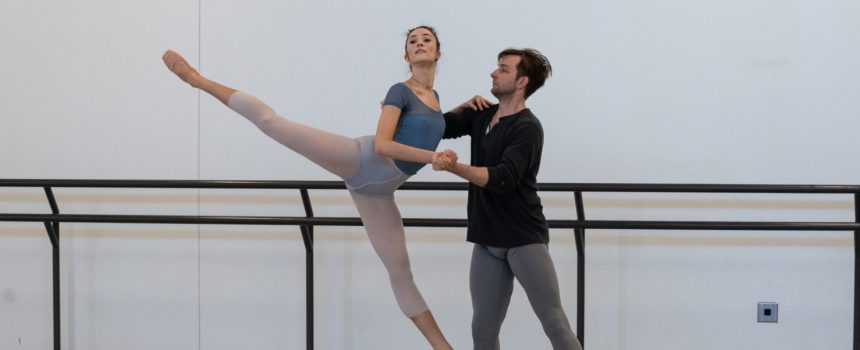
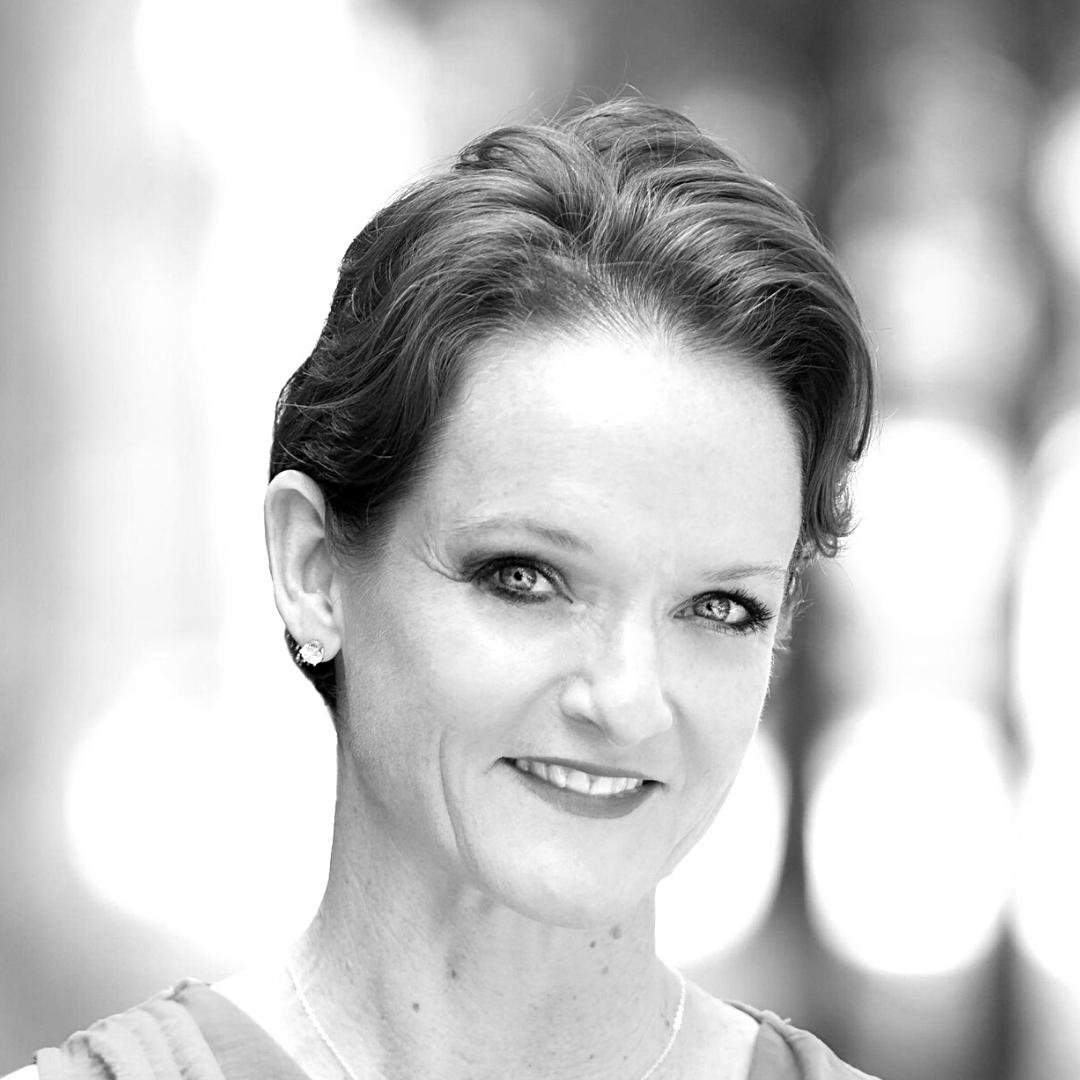 One of the pieces in PBT’s The Masters Program: Balanchine and Beyond is Christopher Wheeldon’s Polyphonia. This is considered the breakthrough work of the Tony Award-winning choreographer. To stage the ballet, former New York City Ballet dancer and frequent Wheeldon repetiteur, Michele Gifford has traveled to Pittsburgh. We sat down with Michele to find out more about Polyphonia, her career and Wheeldon’s choreography.
One of the pieces in PBT’s The Masters Program: Balanchine and Beyond is Christopher Wheeldon’s Polyphonia. This is considered the breakthrough work of the Tony Award-winning choreographer. To stage the ballet, former New York City Ballet dancer and frequent Wheeldon repetiteur, Michele Gifford has traveled to Pittsburgh. We sat down with Michele to find out more about Polyphonia, her career and Wheeldon’s choreography.
Tell us a bit about yourself and your career.
I was at New York City Ballet from 1988 to 2000. I was just in the corps de ballet, but I had the opportunity to do many soloist and principal roles, which was amazing. Then I left New York and had a son. I’m from Texas originally and my husband and I wanted to be closer to our parents. I ended up joining Texas Ballet Theatre, which at the time was called Fort Worth / Dallas Ballet. It became Texas Ballet Theater when Ben Stevenson took over. I danced for Ben for several years and had my daughter and then went back to dancing for another year at Texas Ballet Theatre. Then I decided to freelance, and I freelanced for 10 years. So I retired from performing when I was 46. I had a really nice long career, I’m very lucky. Now I have a Gyrotonic studio and I stage Balanchine and I stage Wheeldon.
You have been staging works by renowned choreographer Christopher Wheeldon for some time. When did you two first meet?
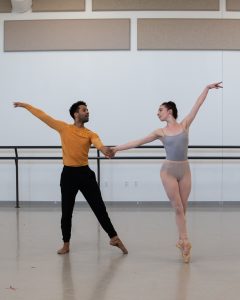
I met Chris when he was a dancer with The Royal Ballet and he came in to take a company class at New York City Ballet.
What is Mr. Wheeldon’s creation process like?
He is very fun in the studio and always wants the best for the dancers as well as the piece. He is also extremely musical.
How does Mr. Wheeldon approach his ballet works?
Chris’s vocabulary is based on classical ballet so you’re using classical vocabulary. The interesting thing that comes from it is how you get from Point A to Point B. And then it just builds on that depending on who’s in the room or who he’s inspired by.
Tell us a bit about Polyphonia
It’s 4 couples and is about 28 minutes long. Christopher Wheeldon choreographed this in 2001 as a trilogy using the same composer. He did Polyphonia and then a ballet called Morphoses with New York City Ballet and then he did a ballet called Continuum with San Francisco Ballet.
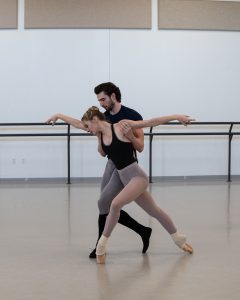
How would you describe this ballet in one sentence?
Wheeldon describes it as a collection of moods in a sketchbook of movement. I can completely see that because it doesn’t really tie together, but yet it does. It’s like you’re looking through somebody’s diary – or you’re looking through a sketchbook, where each page is a different mood. How he chose to arrange the music is great too.
Why did Wheeldon choose this complex music?
He said he found a CD at a listening station at Tower Records in New York. He said he was terrified of its complexity but needed to push himself away from instantly accessible melodic music there was something about the discordance, spikiness, the knottiness of the music that attracted him – a dark romance
A fun fact is that he also played a section of the ballet called “the wedding” and it’s one of the duets he said he played at school and he remembered finding it difficult but haunting.
Does the music change throughout the piece?
Yes, it goes from crazy music to a romantic story. The music from the first movement is called Disorder. It’s a very hard piece to play and challenging to dance as well.
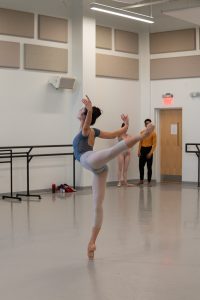
Each section is very different from the next. It’s interesting on the ear, it’s interesting on the eye, visually, so it’s an all-encompassing work. The last duet has become one of Wheeldon’s signature duets.
What are some of the challenges for the dancers in this piece?
I think the only movement that’s hard because of the rhythm is the first movement. The rest of it is singable. The finale, the last movement, has counts as well but I think when you really start listening to it and stop counting, you get into the groove of the music. I think the dancers are doing great.
Why is this ballet one of your favorite Mr. Wheeldon pieces?
These kinds of ballets are actually my wheelhouse. This is how my brain works, it’s how my body worked as a dancer. I would feel more comfortable in something like this. It’s how I moved, the athleticism behind it.
Christopher Wheeldon also created and choreographed MJ the Musical on Broadway, correct?
Yes, he did. Chris said when he was young at Royal Ballet School all of his friends had ballet posters of all the famous dancers- Nureyev, Baryshnikov, Godunov. He had a poster of Michael Jackson. Isn’t that amazing – like it was always meant to be.
About Michele Gifford
Michele began her training at Dallas Metropolitan Ballet. At 16 she attended New York City Ballet’s School of American Ballet on full scholarship and at 18 became a member of the company. In her 12-year career at NYCB Michele performed soloist and principal roles in Balanchine’s Apollo, Rubies, Agon, and Stars and Stripes, among others. She originated many roles, including in Jerome Robbins’ West Side Story Suite and Christopher Wheeldon’s Slavonic Dances. In 2000, Michele joined Texas Ballet Theater, where she performed principal roles in Ben Stevenson’s Coppelia and Dracula along with many Balanchine works. Michele was in demand as a guest artist and joined Bruce Wood Dance Company where she was also Company Manager.
Michele has taught throughout the country including at Ballet West, Boston Ballet, and Indiana University. She is a répétiteur for the Balanchine Trust and Christopher Wheeldon. She owns a Gyrotonic studio and is passionate about passing on her knowledge of movement to people from all walks of life.
About Christopher Wheeldon
Christopher Wheeldon is Artistic Associate of The Royal Ballet and a choreographer who has created and staged productions for many of the world’s major ballet companies. He is a lauded dancer who trained at The Royal Ballet School and joined the company in 1991; in 1993 he joined New York City Ballet and was promoted to Soloist in 1998. He retired from dancing in 2000 to focus on choreography and was named NYCB’s first Resident Choreographer in 2001, choreographing Polyphonia that same year.
Mr. Wheeldon’s choreographic range is remarkable, encompassing contemporary works, full-length ballets, Broadway musicals and more. A short list includes Alice’s Adventures in Wonderland, The Winter’s Tale, and most recently, Like Water for Chocolate (2022) for The Royal Ballet; Cinderella for Het Nationale Ballet (restaged for English National Ballet and performed extensively by other companies); “Dance of the Hours” for La Gioconda and Carmen at the Metropolitan Opera; and ballet and dance sequences for the London 2012 Olympic Closing Ceremonies and the feature film Center Stage. Broadway credits include the musicals Sweet Smell of Success, An American in Paris and MJ the Musical (2022) the latter two garnering him Tony Awards for Best Choreography.
Additional awards include the Outer Critics Award for Best Choreography and Direction for An American in Paris, the Martin E. Segal Award from Lincoln Center, the American Choreography Award, the Dance Magazine Award, South Bank Show Award, multiple London Critics’ Circle Awards and the Léonide Massine Prize for new choreography. Mr. Wheeldon is an Olivier Award winner twice over and was named an Order of the British Empire. He is an Honorary Fellow of the American Academy of Arts and Sciences and is a dual citizen of the United States and the United Kingdom, residing in New York City.
